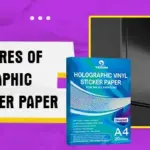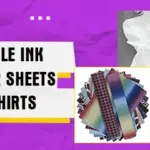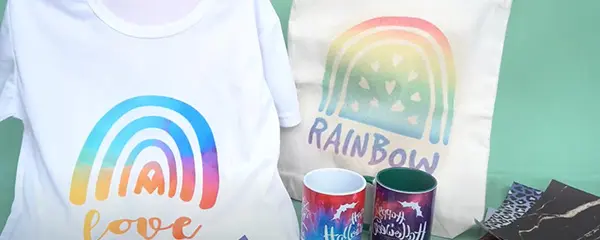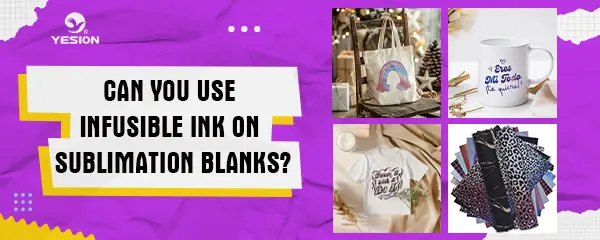
Key Features of Holographic Vinyl Sticker Paper
2024-07-26
Infusible Ink Transfer Sheets for shirts
2024-08-02As crafting enthusiasts and DIY decorators, we often find ourselves exploring various techniques to create unique and personalized items. One question that frequently arises is whether Infusible Ink can be used on sublimation blanks. In this article, we’ll delve into this topic, providing you with a comprehensive understanding of both Infusible Ink and sublimation blanks, and whether they’re compatible.
Understanding Infusible Ink
What is Infusible Ink?
Infusible Ink is a proprietary product developed by Cricut. It’s a unique type of transfer material that, when applied with heat, becomes part of the fabric or surface it’s applied to, rather than sitting on top like traditional vinyl or iron-on transfers.
How Infusible Ink Works
Infusible Ink uses a heat-activated dye that, when exposed to high temperatures, turns into a gas and then permeates the fibers or surface of the material it’s being applied to. As it cools, the dye solidifies, becoming a permanent part of the item.
Understanding Sublimation Blanks
What are Sublimation Blanks?
Sublimation blanks are items specifically designed to accept sublimation ink. These can include a wide range of products such as t-shirts, mugs, phone cases, and more. They’re typically made with or coated with polyester or a polymer material that can bond with sublimation dye.
How Sublimation Works
Sublimation is a process where special sublimation inks are turned into a gas under high heat and pressure. This gas then permeates the surface of the blank, cooling and solidifying to become a permanent part of the item.
Compatibility of Infusible Ink and Sublimation Blanks
Can You Use Infusible Ink on Sublimation Blanks?
The short answer is yes, you can use Infusible Ink on sublimation blanks. Both Infusible Ink and sublimation processes work on similar principles, using heat to transfer dye into the material. Sublimation blanks are designed to accept this type of dye transfer, making them compatible with Infusible Ink.
Why It Works
Sublimation blanks are typically made with or coated in polyester or a similar polymer. These materials are receptive to the dye-sublimation process, which is essentially what Infusible Ink uses. When you apply Infusible Ink to a sublimation blank using heat, the ink will bond with the polyester fibers or coating, creating a permanent, vibrant design.
How to make a sublimation mug with infusible ink transfer sheets?
Best Practices for Using Infusible Ink for Sublimation Blanks
1. Temperature Considerations
While both processes use heat, the optimal temperature may vary. Always refer to both the Infusible Ink instructions and the sublimation blank specifications to ensure you’re using the correct temperature.
2. Pressure and Time
The amount of pressure and time needed for Infusible Ink may differ from traditional sublimation. Experiment with small test pieces to find the perfect combination for your specific project.
3. Color Vibrancy
Infusible Ink may produce slightly different results on sublimation blanks compared to Cricut’s own blanks. Be prepared for potential variations in color vibrancy or saturation.

infusible ink transfers
4. Surface Preparation
Ensure the sublimation blank is clean and free from any oils or residues that might interfere with the transfer process.
We’ve explored the compatibility of Infusible Ink with sublimation blanks and found that yes, you can indeed use Infusible Ink on these specially prepared items. This opens up a world of possibilities for crafters and DIY enthusiasts, allowing you to combine the ease of use of Infusible Ink with the wide variety of sublimation blanks available on the market.

